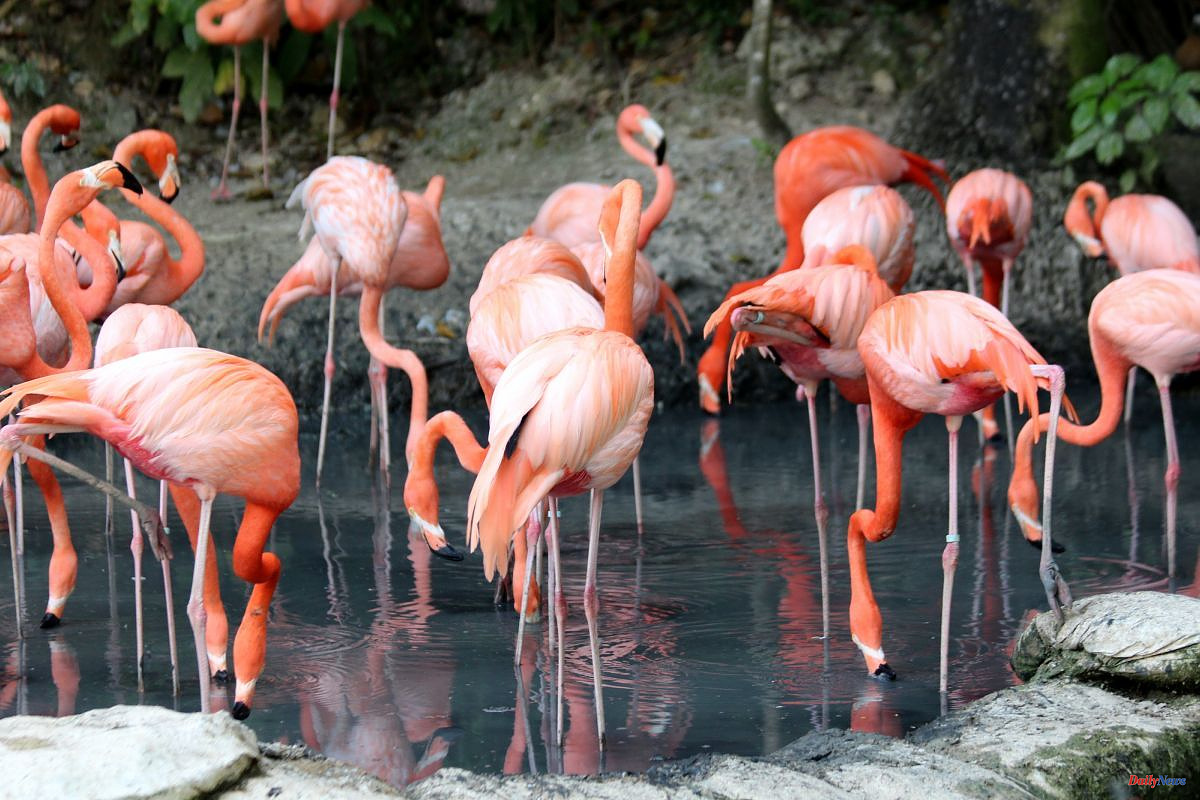Flamingos are wading birds and recognizable by their pink color. However, their plumage is white when they hatch. There is a scientific explanation for this change and for the different tones displayed by these animals.
The birds of this species leave the shell with white feathers and those that are coming out are gray, indicates National Geographic. They may also show some browns. They only turn pink when they are adults and this is due to what they eat.
Alicia Hernández, scientific disseminator of the Oceanogràfic de Valencia, exposed in a delivery of the Mapi program in 2022: "As they grow and feed, they get that pink color through food. They feed with their banana-shaped beak, filtering bacteria, crustaceans and algae in the water".
These products are the basis of their diet and have carotenes, a pigment that can be found in living beings that photosynthesize. They are chemical substances that end up changing their appearance: "The more pink or red those foods are, the more pink or reddish the flamingos become... We can say that what you eat is what you grow."
The biologist Andrea González explained to RTVE in 2010 that in the Santillana del Mar zoo (Santander) they give a carotene supplement to the flamingos so that they are pink: "If we didn't, they would be white because they eat a compound feed that does not include the pigment".
The tones that can be seen in these animals give clues about their state of health: a well-fed flamingo has pink-red plumage, while a sick one or one with nutritional problems is paler in color and close to white.
Flamingos' feathers change color when they are grown and fed properly, but so do their eyes. When they reach a certain age, they turn from brown to pale yellow.
According to the criteria of The Trust Project












